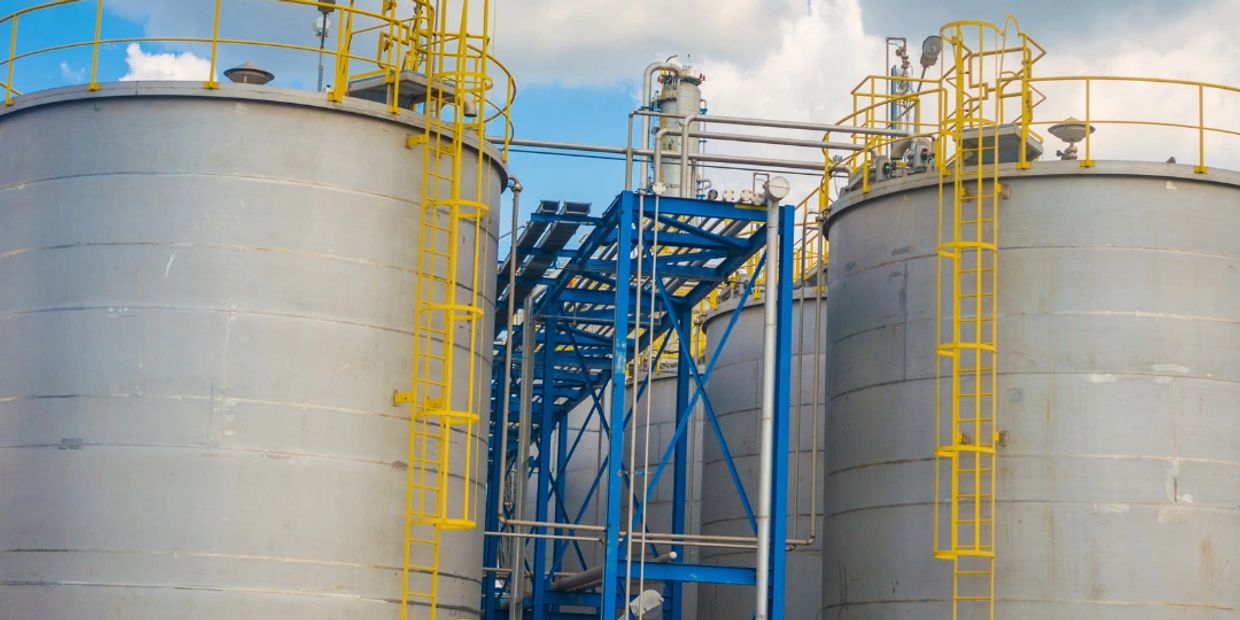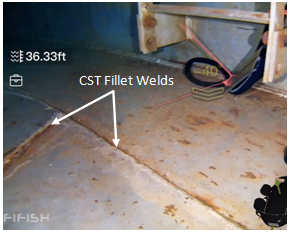
Understanding the Relevance of Rigorous Tank Welding Examination Processes in Preventing Failings and Enhancing Life-span
In the realm of industrial procedures, the value of strenuous container welding examination procedures can not be overstated. These evaluations function as a crucial line of protection versus possible failures that could not just endanger asset honesty yet likewise present severe safety and security dangers. By implementing various evaluation methodologies, companies can spot imperfections early, thereby preventing costly effects and prolonging the life of their tank. However, the landscape of conformity and finest practices is ever-evolving, triggering a better assessment of how these processes can be enhanced for maximum efficiency. What are the emerging fads and difficulties that specialists must navigate?
Relevance of Welding Examinations
Recognizing the critical function of welding examinations in keeping architectural integrity, these procedures ensure that welds meet established requirements and requirements - Tank Welding Inspection. Reliable welding assessments are extremely important in the building and upkeep of tanks, as they directly influence the durability and security of the frameworks. By determining potential shortages, such as inappropriate strategies or product problems, assessments reduce the threat of catastrophic failings
Welding examinations include different approaches, consisting of visual examinations, non-destructive screening (NDT), and assessments of welding procedures. Each technique serves to validate the quality and compliance of welds with market laws, thereby securing both employees and ecological rate of interests. Routine assessments promote a society of liability and excellence within the labor force, ensuring that all team participants adhere to ideal methods.
Additionally, these inspections add to the total lifecycle monitoring of storage tanks by determining wear or destruction early in the process. By resolving these issues proactively, companies can expand the operational life-span of their possessions, ultimately bring about set you back savings and improved integrity. In recap, the value of welding examinations can not be overstated; they are crucial for making certain safety, long life, and conformity in storage tank construction and upkeep.
Common Sources Of Tank Failures
Recognizing the usual root causes of container failings is important for avoiding disastrous incidents and guaranteeing the durability of storage systems. One widespread cause of container failure is corrosion, which can dramatically deteriorate the architectural stability of containers in time. Ecological variables, such as direct exposure to dampness, chemicals, and temperature fluctuations, can increase this process.
Another critical aspect is improper welding methods, which may lead to problems like fractures or insufficient joints. These concerns can compromise the storage tank's strength and lead to leaks or tears. Furthermore, inadequate maintenance practices can result in undetected damage, inevitably enhancing the risk of failing.
Layout imperfections, including poor thickness or poor material choice, can likewise add to tank susceptabilities. In addition, operational variables, such as overfilling or exposure to extreme pressures, can strain the storage tank beyond its designated restrictions.
Trick Assessment Strategies
Efficient i was reading this evaluation strategies play an essential role in minimizing the dangers associated with storage tank failings. A comprehensive method to container welding assessment includes a number of key techniques, each created to identify prospective flaws and guarantee architectural integrity.
Visual assessment continues to be the first line of defense, enabling assessors to identify surface area abnormalities such as fractures, rust, or misalignment. This method is usually supplemented by non-destructive screening (NDT) approaches, which are necessary for assessing weld top quality without jeopardizing the tank's integrity.

Furthermore, magnetic particle screening (MPT) and dye penetrant screening (DPT) work for spotting surface problems in ferromagnetic materials and non-porous surface areas, specifically. Each method has its toughness and limitations; consequently, a combination of techniques is usually employed to attain comprehensive inspection results.
Advantages of Rigorous Inspections
While the prompt costs of extensive assessments may appear challenging, the long-term benefits dramatically outweigh these preliminary investments. Implementing extensive evaluation processes not only enhances the honesty and safety of container structures but likewise reduces the danger of disastrous failures that can lead to considerable financial losses and ecological harm.
Extensive assessments assist identify More Info potential problems early in the welding procedure, enabling prompt corrective actions that stop costly fixings or substitutes down the line. This aggressive strategy cultivates a culture of quality control, where adherence to ideal practices comes to be implanted in functional treatments. Additionally, regular assessments add to enhanced possession longevity, as they make sure that tanks remain in optimal condition throughout their lifespan.
Additionally, the paperwork generated from these evaluations works as a valuable source for upkeep preparation and performance evaluations. This data-driven strategy can likewise boost operational effectiveness, bring about decreased downtime and enhanced productivity. Ultimately, strenuous examinations not just protect the structural integrity of tanks however additionally give substantial economic benefits, reinforcing the idea that spending in top quality assurance is a sensible choice for any type of organization entailed in tank procedures.
Regulative Standards and Conformity
Governing criteria and compliance are crucial components of storage tank welding evaluation procedures, as they establish the framework for making sure security and top quality in operations. Compliance with these standards not just alleviates risks however also enhances the overall stability of welded structures. Numerous organizations, including the American Culture of Mechanical Designers (ASME) and the American Petroleum Institute (API), provide guidelines that determine acceptable techniques for welding, inspection, and testing.
These requirements mandate using certified workers, the execution of extensive examination methods, and adherence to particular welding procedures. By straightening with governing demands, companies can ensure that their tanks fulfill the needed safety and efficiency requirements, thereby lowering the probability of tragic failures that can lead to substantial economic losses and environmental damage.

Furthermore, governing compliance promotes a culture of responsibility and constant enhancement within the welding and manufacture sectors (Tank Welding Inspection). Normal audits and assessments make sure that practices remain straightened with progressing requirements, consequently advertising long-lasting integrity and operational efficiency. Eventually, adherence to regulatory standards not only protects assets but additionally improves the life-span of welded storage tanks, guaranteeing they serve their designated function properly in time
Verdict
Finally, strenuous tank welding examination processes play a vital function in preventing failures and expanding the lifespan he said of storage space frameworks. By identifying potential deficiencies through various inspection methods, organizations can alleviate threats linked with container integrity. The execution of these examinations cultivates a culture of top quality guarantee, leading to improved asset long life, decreased maintenance costs, and enhanced operational performance. Following regulatory criteria better highlights the importance of these evaluations in preserving safety and dependability within the industry.